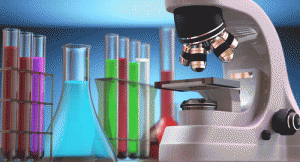 Inflammasomes are believed to play a critical role in systemic inflammation. Although multiple cell types assemble inflammasomes, researchers still do not know which cells contain the inflammasomes responsible for systemic inflammation. However, studies have demonstrated that inflammasomes containing the adaptor protein ASC are responsible for cytokine release. Thus, this particular type of inflammasome plays a critical role in the inflammatory response required to clear infection and initiate wound healing after tissue damage. Researchers also believe that uncontrolled and excessive production of inflammasome mediators may result in autoinflammatory and autoimmune diseases. Taken together, this would suggest that to maintain health, the inflammasome response must be tightly controlled.
Inflammasomes are believed to play a critical role in systemic inflammation. Although multiple cell types assemble inflammasomes, researchers still do not know which cells contain the inflammasomes responsible for systemic inflammation. However, studies have demonstrated that inflammasomes containing the adaptor protein ASC are responsible for cytokine release. Thus, this particular type of inflammasome plays a critical role in the inflammatory response required to clear infection and initiate wound healing after tissue damage. Researchers also believe that uncontrolled and excessive production of inflammasome mediators may result in autoinflammatory and autoimmune diseases. Taken together, this would suggest that to maintain health, the inflammasome response must be tightly controlled.
Lucia de Almeida, a postdoctoral fellow at Northwestern University in Chicago, and colleagues published the results of their detailed analysis of inflammasome response online on Aug. 18 in Immunity and shed light on inflammasome assembly and regulation.
In a press release, senior author Christian Stehlik, PhD, professor of rheumatology at Northwestern, explains, “Inflammation is controlled by a complex network of regulators that is still poorly understood. Here, we describe a novel inhibitor of the inflammatory response.”2
Such an advance in understanding should lead to the development of novel therapies for inflammatory diseases. Previously, Dr. Stehlik’s laboratory has shown that the PYRIN domain-only protein POP3 inhibits the immune response to virus infection. Several PYRIN domain proteins have also been implicated in NF-ҡB regulation.
In the current study, the investigators turned their attention to the POP1 PYRIN domain protein. Previous studies have found POP1 is regulated by toll-like receptor (TLR) and interleukin 1 receptor (IL-1R) signaling. Dr. de Almeida and colleagues found that POP1 inhibits ASC containing inflammasome assembly by preventing inflammasome nucleation. In doing so, POP1 inhibits caspase-1 activation, the release of IL-1β and IL-18, as well as the release of ASC particles from macrophages. POP1 also inhibits pyroptosis and prevents the propagation of the ASC danger particle–mediated response to bystander cells. Thus, the investigators proposed that POP1 acts in a regulatory feedback loop to decrease excessive inflammatory responses and prevent systemic inflammation. They theorized that it does this by inhibiting the inflammasome-mediated responses to pathogen-associated molecular patterns (PAMPs) and damage-associated molecular patterns (DAMPs). They then tested this hypothesis in mice.
Unfortunately, mice do not have an ortholog for POP1. To get around this obstacle, the investigators engineered mice with transgenic expression of human POP1 in their monocytes, macrophages and dendritic cells. They found these mice were protected from systemic inflammation triggered by PAMPs, inflammasome component NLRP3 mutation and ASC danger particles. The mice also recovered quickly from peritonitis, sepsis and cryopyrinopathy.
